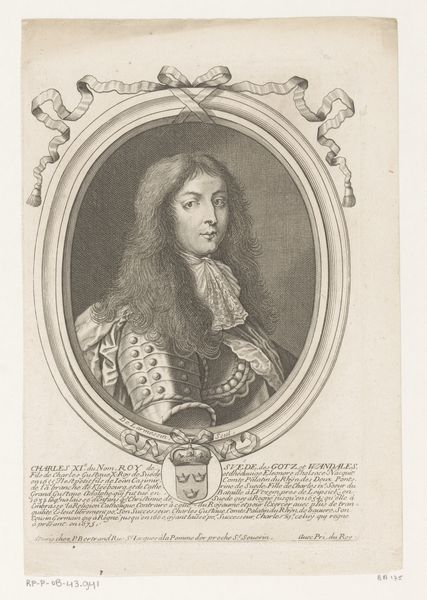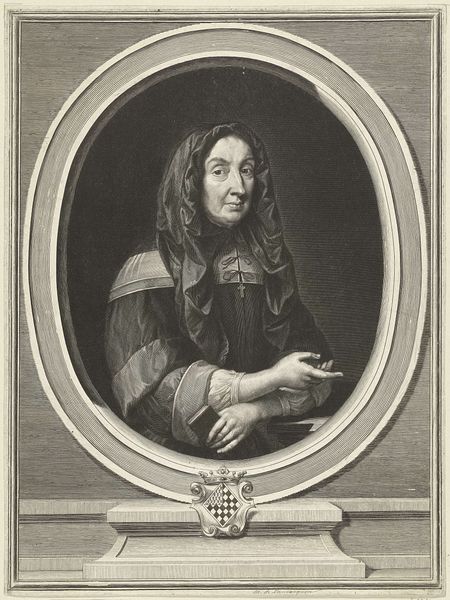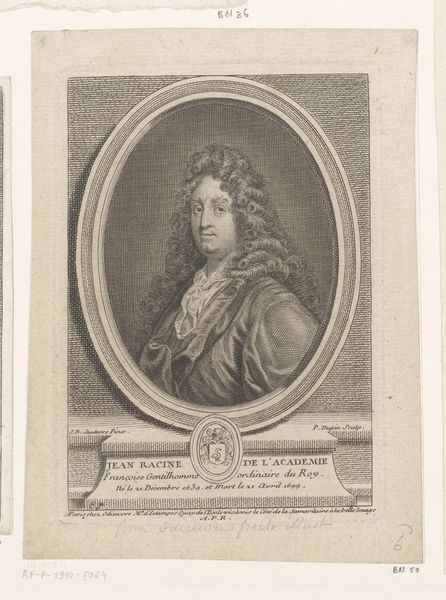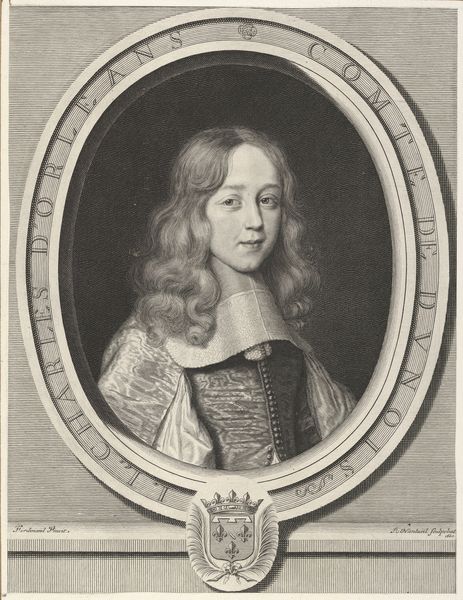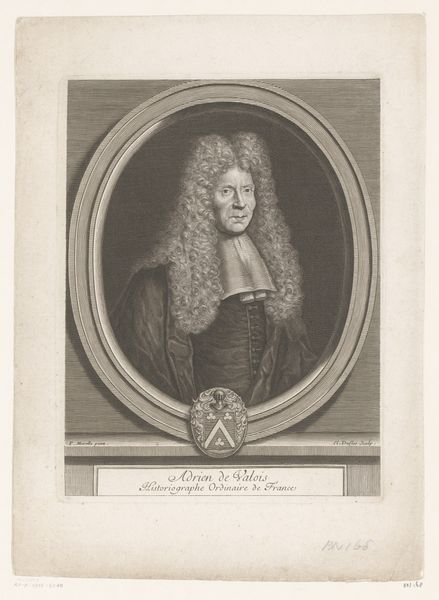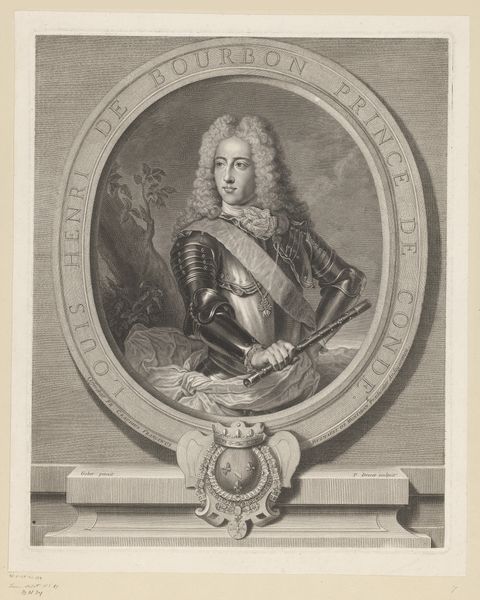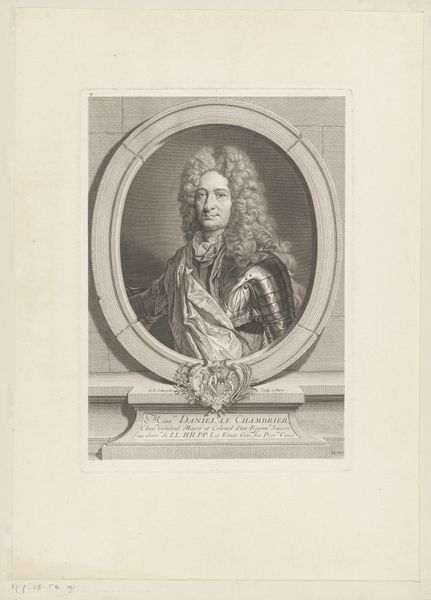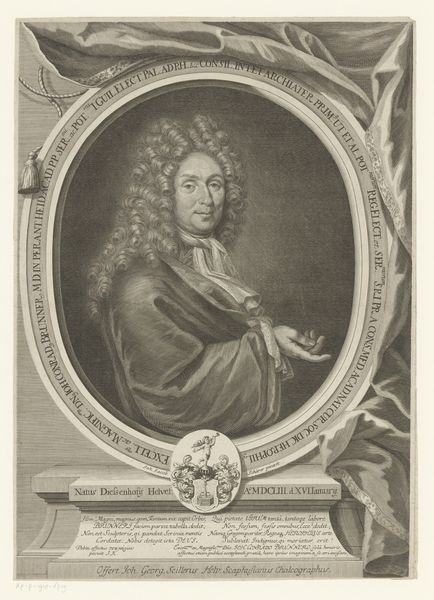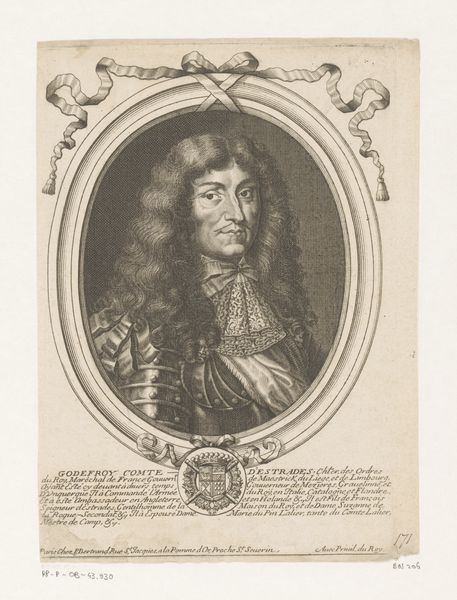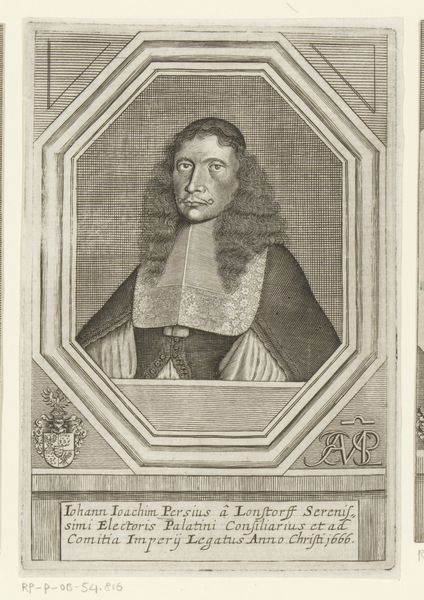
drawing, print, metal, engraving
#
portrait
#
drawing
#
baroque
# print
#
metal
#
men
#
engraving
Dimensions: Sheet: 14 3/4 x 11 1/8 in. (37.4 x 28.2 cm)
Copyright: Public Domain
Curator: Looking at this piece, I'm immediately struck by its formality. There’s a somber stillness, a quiet dignity almost radiating from the engraving. Editor: Yes, "Portrait of Henri Charles de la Tremouille," dating to 1664, certainly carries the weight of its era. It's an engraving, a printmaking technique rendered on metal by Pierre Philippe. The portrait, housed here at the Metropolitan Museum of Art, presents us with a member of French nobility during a tumultuous period. Curator: That makes sense. I notice the laurel frame—it speaks of victory and status, but in a controlled, almost restrained way. The figure is in armor, so it refers to martial prowess. Would you say this evokes the heroic tradition, or something else? Editor: It certainly draws on the heroic ideal, but the context of the Fronde rebellions cannot be ignored. These aristocratic revolts against the French monarchy shaped La Trémoille's world. Here we see a careful management of his image. He wears armor, yes, but his hair is long and styled, and the expression isn’t one of aggression but of composed authority. He wants to evoke power without threatening the king. Curator: Ah, I see the duality. There's a conscious effort to present power tempered with… compliance, almost? The engraving, while technically precise, seems to suggest a world of shifting alliances. Even the elaborate crest below is sending a statement of complex lineage and loyalty. Editor: Exactly. The choice of engraving as a medium reinforces this. Prints could be circulated widely, shaping public perception and reminding everyone, including the king, of La Trémoille's position in the social and political fabric. It served to advertise his place in the existing political world. Curator: So, this is less about immortalizing a warrior and more about maintaining a political presence, making a visual argument for power? A cultural object for negotiation. I see how carefully composed it is. Editor: Precisely. It shows us the inherent performativity of power. An era marked by war, unrest and shifting monarchical control needed to be projected by people like Henri-Charles through calculated portraiture. Curator: It's amazing how an image, seemingly straightforward, can reveal such nuanced complexities when you delve deeper into the history of its creation. Thank you, this changed how I'll think about power. Editor: Likewise! Seeing the echoes of political turbulence reverberate through visual symbols opens new ways to appreciate both art and history.
Comments
No comments
Be the first to comment and join the conversation on the ultimate creative platform.

